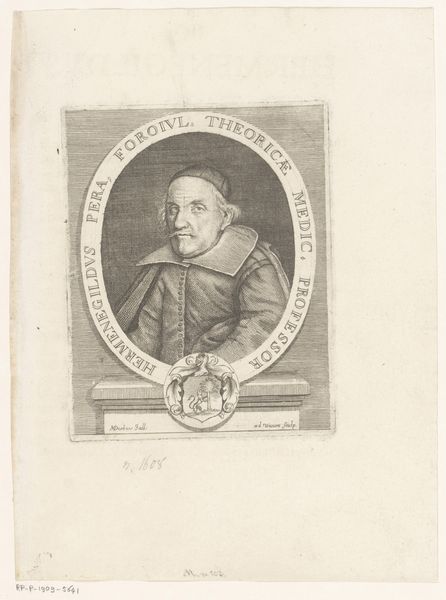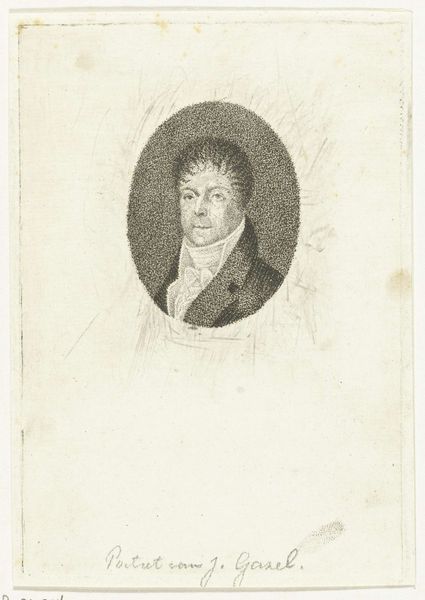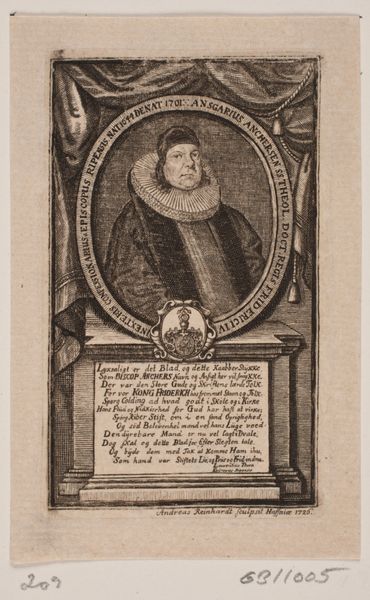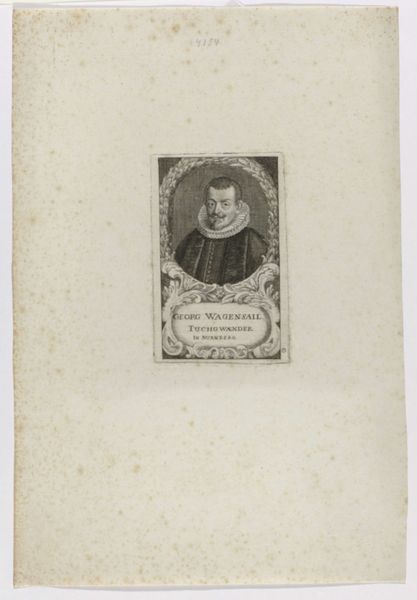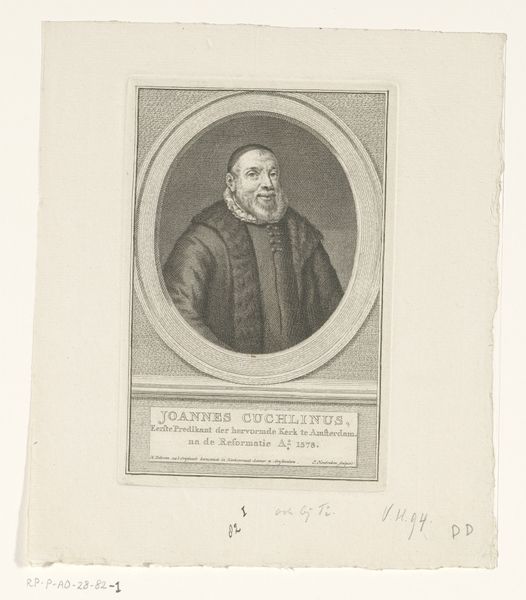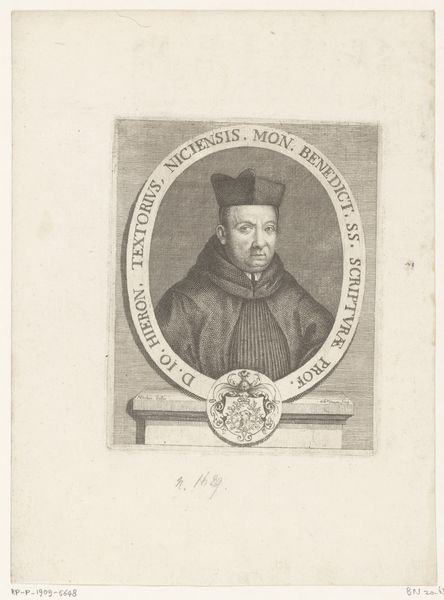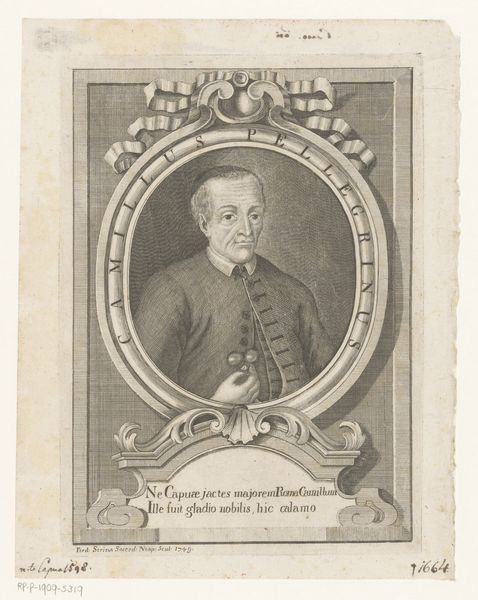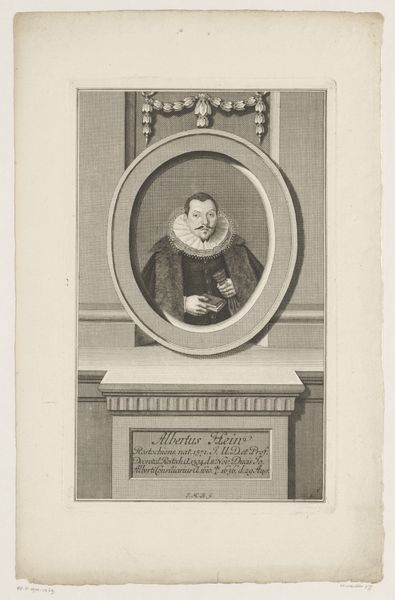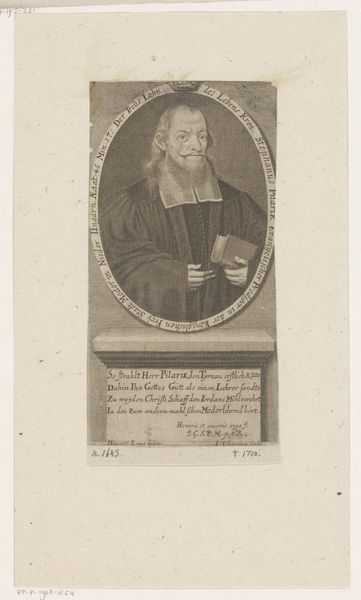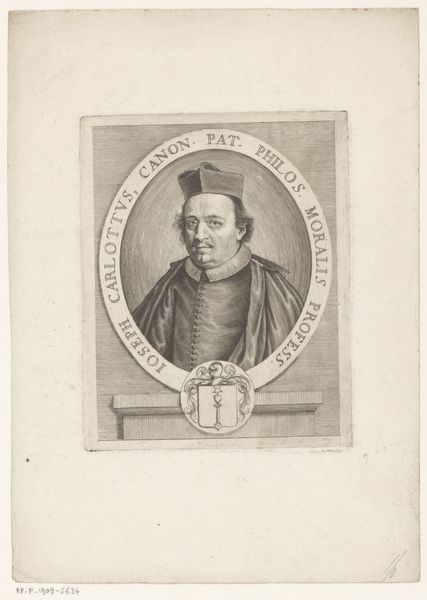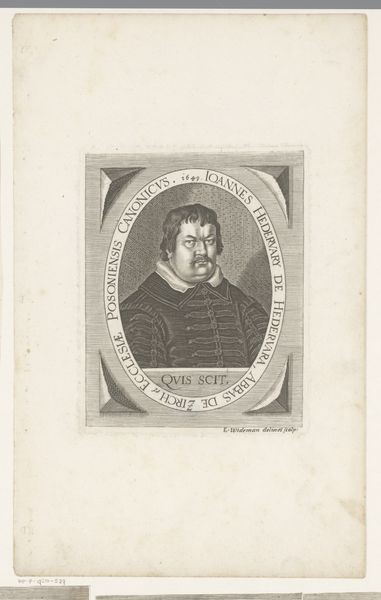
Dimensions: height 177 mm, width 112 mm
Copyright: Rijks Museum: Open Domain
This is Medardus Thoenert’s portrait of Johann Bugenhagen. It was made using engraving, a printmaking technique reliant on the skillful manipulation of metal. The image is achieved by incising lines into a metal plate, which then holds ink and transfers the image to paper under pressure. Look closely and you’ll see the network of fine lines that create shading and detail. Engraving demanded precision and control, a real mastery over the burin, the tool used to carve the lines. This mode of reproduction allowed for the widespread dissemination of images. It's an early form of mechanical reproduction and it democratizes image making, making it available to a wider public. The amount of labor involved speaks to a pre-industrial era, where craft and artistry were deeply intertwined. Considering the material and the making helps us understand the social and cultural role this portrait would have played at the time. It's not just an image; it's a testament to skill, labor, and the changing landscape of image production.
Comments
No comments
Be the first to comment and join the conversation on the ultimate creative platform.
